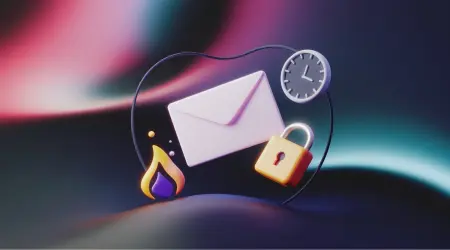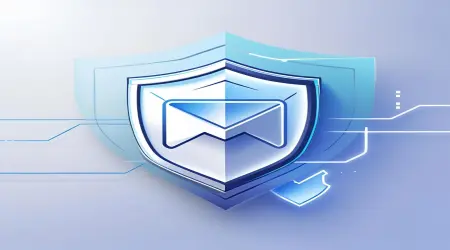

Spam & Scam Awareness: A Complete Guide to Staying Safe Online
In the constantly expanding digital ecosystem, the rise of cyber threats—especially spam and scam emails—has become a serious concern for individuals and businesses alike. Millions of fraudulent messages are sent every day with the intent to mislead, defraud, or harvest data. As a provider of temporary email services, we believe it's our duty to promote awareness, offer guidance, and help our users take control of their digital privacy and security.
The Scale of the Problem
According to recent data from Statista, over 320 billion emails are sent every day, and a staggering 45% of them are spam. Among these, thousands are carefully crafted scams targeting individuals with the intent to steal identities, money, or access. While spam can be annoying, scams can be devastating, especially for users unaware of the risks.
What Exactly is Spam?
Spam emails are unsolicited messages sent in bulk, usually for commercial purposes. These messages often promote questionable products or services and can include links to phishing websites or malware. Although spam may not always be malicious, it contributes to email overload and lowers productivity. More importantly, spam often serves as a disguise for more serious threats.
Understanding Scams and Cyber Fraud
A scam is a deliberate attempt to deceive people into providing personal, financial, or login information by pretending to be a legitimate entity. Email scams may impersonate your bank, online store, tech support, or even friends and coworkers. These scams come in various forms, including:
- Phishing – fake emails prompting users to enter sensitive data
- Spear phishing – highly targeted attacks based on personal info
- Business email compromise – impersonating executives for wire fraud
- Fake job offers – tricking victims into sending resumes or money
- Tech support scams – claiming viruses or issues exist on your device
Recognizing Red Flags in Scam Emails
Scammers rely on psychological manipulation and urgency. Be alert for these warning signs:
- Emails claiming "Your account will be closed!" or "Payment failed!"
- Generic greetings like “Dear Customer” instead of your name
- Requests for personal or financial information
- Suspicious attachments (e.g., .exe, .zip, .docm files)
- Sender email addresses that look legitimate but have small variations
- Poor spelling, grammar, or awkward phrasing
- Unsecured websites (non-HTTPS links)
Practical Steps to Stay Safe
Here are some simple but effective steps to protect your inbox and your identity:
- Use temporary emails for untrusted websites or one-time signups
- Install a reliable antivirus and enable real-time email scanning
- Enable two-factor authentication (2FA) on all important accounts
- Never click on unfamiliar or suspicious links or buttons in emails
- Regularly check and change your passwords using a password manager
- Educate yourself and others on the latest online scams
How Temporary Email Helps Combat Spam
TempMail and similar services act as a buffer between your real identity and potential threats. By using a disposable email address, you can sign up for services, download resources, or register on forums without exposing your personal email to bots or shady marketers.
However, while temporary email protects your identity, it is not a replacement for secure email practices. Never use temporary email for banking, medical services, or account recovery.
Why Education is the Best Cybersecurity Tool
Technology alone can’t prevent cybercrime. User awareness is crucial. Most scams succeed not because they're sophisticated, but because they target unaware or unprepared users. The more you learn about digital threats, the less likely you are to become a victim.
Real-World Examples of Modern Email Scams
Here are real examples of scam types to look out for:
- Fake COVID-19 relief fund emails claiming you're eligible for money
- Amazon refund scams pretending there's an issue with your order
- PayPal verification scams saying your account is “on hold”
- Crypto giveaways asking you to send crypto to “get more back”
- Romance scams luring victims into long-term emotional manipulation
Using TempMail Responsibly
At TempMail, we prioritize privacy, speed, and safety. Our platform is designed to help users maintain anonymity and avoid spam. While our service is built to reduce exposure to marketing traps and unsolicited emails, we also encourage responsible usage:
- Do not use TempMail for illegal or fraudulent activities
- Never trust messages asking for money or personal details
- Do not forward TempMail inbox links to others
- Always read emails critically—even temporary inboxes are vulnerable
Legal Disclaimer
TempMail is a free, anonymous service offered to reduce the amount of spam users receive from websites that may misuse email data. We do not store user information and are fully compliant with data privacy regulations. All content on this page is for educational purposes only and adheres to Google AdSense content guidelines.
Final Words: Stay Safe, Stay Smart
In a world where every click matters, digital safety begins with knowledge and caution. Spam and scam messages are becoming more sophisticated, but so can we. Use smart tools like TempMail wisely, stay informed, and never underestimate the power of awareness.
This article is part of our ongoing commitment to user safety, digital literacy, and ethical internet usage. Thank you for staying secure with TempMail.

